Crust pizza is more than just a base for toppings it’s the foundation of every great slice. Whether you crave a thin and crispy crust, a soft and chewy bite, or a cheese-filled stuffed crust pizza, the right dough makes all the difference.
I’m Chef Luna, and after years of perfecting my homemade pizza crust, I’m excited to share my best seven crust pizza recipes with you. Have you ever wondered why some pizzas have that irresistible pizzeria-style crunch, while others stay soft and airy? Or why a deep-dish crust holds all the flavors so beautifully? The secret lies in the dough, and I’m here to show you how to master it.
With just a few simple ingredients and the right techniques, you can create restaurant-quality crust pizza at home whether you prefer a classic Italian-style base, a flaky deep-dish, or a gooey, cheesy stuffed crust pizza. So, roll up your sleeves, preheat that oven, and let’s start baking.
Table of Contents
Key Benefits of Crust Pizza
A great crust pizza isn’t just about holding toppings it’s the secret to achieving that perfect balance of crispiness, chewiness, and flavor in every bite. Whether you prefer a thin, crispy crust or a stuffed crust pizza loaded with gooey cheese, mastering the dough opens up endless possibilities.
Why You’ll Love Homemade Crust Pizza
– Total Control Over Ingredients – No more preservatives or artificial flavors. You choose the flour, oils, and seasonings for a fresher, healthier crust.
– Perfectly Customizable – Want a soft and chewy base or a flaky, buttery crust? Adjusting hydration levels and baking techniques allows you to create your ideal texture.
– Better Than Takeout – Freshly baked homemade pizza crust has an unbeatable flavor and texture that store-bought or frozen options can’t match.
– Budget-Friendly & Fun – Making pizza at home costs less than ordering in, and it’s a fantastic way to get creative with flavors while bringing family and friends together.
Different Crust Styles & Their Unique Perks
| Crust Type | Texture & Flavor | Best For |
| Thin Crust | Light, crispy, slightly charred edges | Classic Italian pizzas, quick bakes |
| Thick Crust | Soft inside, crisp outside | Hearty toppings, deep flavors |
| Stuffed Crust Pizza | Gooey cheese-filled edges, chewy bite | Cheese lovers, indulgent pizzas |
| Whole Wheat Crust | Nutty, slightly dense, fiber-rich | Healthier options, rustic flavors |
| Gluten-Free Crust | Light, delicate, slightly crispy | Special diets, alternative flours |
| Deep Dish Crust | Buttery, flaky, rich | Chicago-style pizza, loaded toppings |
Chef Luna’s Pro Tips for the Best Crust Pizza
- Use High-Quality Flour – Bread flour creates a chewy, airy texture, while all-purpose flour results in a more crisp, delicate crust.
- Let the Dough Rest – A longer fermentation (overnight in the fridge) enhances flavor and makes the crust easier to work with.
- Preheat Your Baking Surface – Using a pizza stone or cast-iron skillet mimics brick-oven heat, ensuring an ultra-crispy bottom.
- Experiment with Hydration Levels – More water in the dough = airier, lighter crust. Less water = denser, chewier texture.
Final Thoughts
Mastering crust pizza is all about understanding the dough and tweaking it to your taste. Whether you’re craving a thin and crispy base, a fluffy deep-dish crust, or a cheesy stuffed crust pizza, the right techniques make all the difference. Now that you know the key benefits, let’s dive into the must-have ingredients for the perfect pizza crust.
Ingredients for the Perfect Crust Pizza
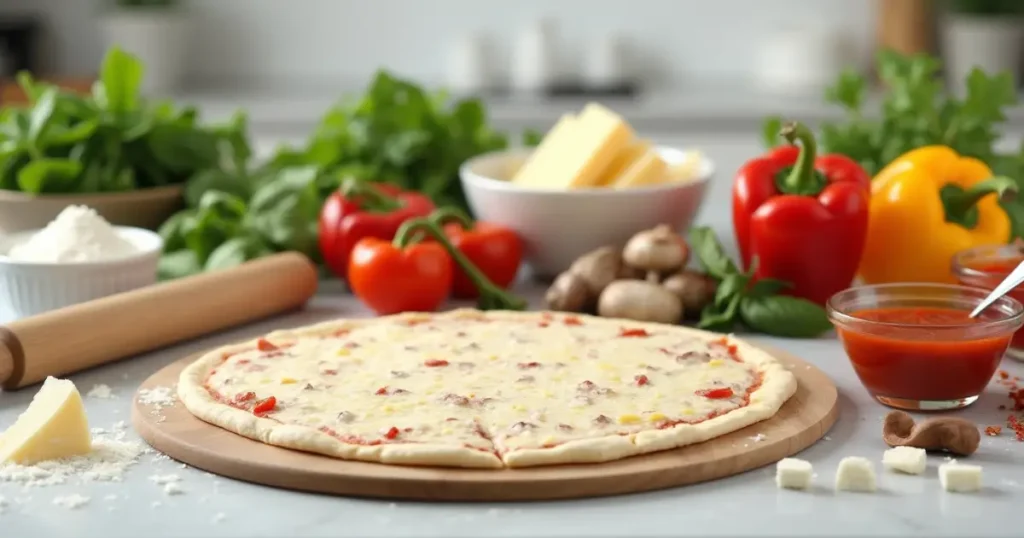
The foundation of a great crust pizza starts with high-quality ingredients. Whether you’re making a thin crust pizza, a deep dish crust, or a stuffed crust pizza, choosing the right components ensures the perfect texture and flavor.
Essential Dough Ingredients
| Ingredient | Purpose | Best for |
| All-Purpose Flour | Balanced texture, ideal for most pizzas | Classic Homemade Pizza Crust |
| Bread Flour | Higher protein for a chewier, airier crust | Soft and Chewy Crust |
| Gluten-Free Flour | Alternative for those with dietary restrictions | Gluten-Free Crust Pizza |
| Yeast | Helps the dough rise, creating light and airy texture | All pizza crusts |
| Warm Water | Activates yeast and hydrates the flour | Crispy Pizza Dough |
| Olive Oil | Adds richness and enhances dough elasticity | Italian-Style Crust |
| Salt | Enhances flavor and strengthens gluten structure | Perfect Pizza Dough |
| Sugar or Honey | Feeds the yeast, adding slight sweetness | Flaky Crust Recipe |
Cheese & Toppings for Flavorful Variations
The right cheese and toppings can turn a basic homemade pizza crust into a gourmet masterpiece.
- Cheese Options:
- Mozzarella – Classic, stretchy texture for cheesy crust pizza.
- Parmesan & Cheddar – Adds sharpness and depth to the flaky crust recipe.
- Ricotta – Ideal for a creamy topping on deep dish crust.
- Toppings to Elevate Your Crust:
- Fresh Basil & Garlic – Perfect for an Italian-style crust.
- Sun-Dried Tomatoes – Adds sweetness to soft and chewy crust.
- Pepperoni & Mushrooms – A must for a classic crispy pizza dough.
Optional Add-Ins for a Flavor Boost
Want to make your crust pizza even more irresistible? Try these:
✔ Garlic Butter Brushed Edges – Enhances stuffed crust pizza flavors.
✔ Sesame Seeds or Parmesan Dusting – Adds crunch and richness.
✔ Infused Olive Oils (Rosemary, Chili, Truffle) – Elevates any homemade pizza crust.
Now that you’ve gathered the best ingredients, let’s dive into the step-by-step instructions for crafting the perfect crust pizza.
Step-by-Step Instructions for the Perfect Crust Pizza
Now that you have the right ingredients, it’s time to bring your crust pizza to life. Whether you’re making a thin crust pizza, a stuffed crust pizza, or a deep dish crust, following these steps will help you achieve the perfect texture and flavor.
1. Prepare the Dough
| Step | Instructions | Pro Tips |
| 1 | In a large mixing bowl, combine warm water, yeast, and sugar (or honey). Let it sit for 5-10 minutes until foamy. | Ensure the water is warm (not hot) to activate the yeast. |
| 2 | Add all-purpose flour (or bread flour for a chewier crust), olive oil, and salt. Mix until a shaggy dough forms. | Use a stand mixer with a dough hook for effortless kneading. |
| 3 | Knead the dough for 8-10 minutes until smooth and elastic. | The dough should pass the “windowpane test” (stretch it thin without tearing). |
| 4 | Transfer the dough to a lightly oiled bowl, cover with a damp cloth, and let it rise in a warm place for 1-2 hours. | For extra flavor, refrigerate overnight for a slow rise. |
2. Shape the Pizza Crust
- Once the dough has doubled in size, punch it down to release air bubbles.
- Transfer to a floured surface and roll out to your desired thickness:
- Thin Crust Pizza – Roll very thin (⅛ inch).
- Soft and Chewy Crust – Keep it slightly thicker (¼ inch).
- Deep Dish Crust – Press into a greased deep-dish pan.
- Stuffed Crust Pizza – Stretch dough wider than your pan and fold cheese into the edges.
3. Pre-Bake for Extra Crispiness (Optional but Recommended.)
For a crispy pizza dough, pre-bake the crust before adding toppings:
- Preheat oven to 475°F (245°C).
- Place the dough on a pizza stone or a cast-iron skillet for better heat distribution.
- Bake for 5-7 minutes until slightly golden.
4. Add Your Favorite Toppings
Now comes the fun part customizing your homemade pizza crust! Spread on your base sauce and layer with your favorite toppings:
- Classic Italian Style – Tomato sauce, mozzarella, fresh basil.
- Cheesy Crust Pizza – Extra cheddar, Parmesan, and garlic butter.
- Loaded Deep Dish – Thick marinara, layers of mozzarella, sausage, and mushrooms.
5. Bake to Perfection
- Return the pizza to the oven and bake for 10-15 minutes until the cheese is bubbly and the crust is golden brown.
- For an extra crispy bottom, bake on a preheated pizza stone.
6. Final Touches & Serving
| Finishing Touch | Effect |
| Brush crust with garlic butter | Enhances flavor & aroma |
| Sprinkle with Parmesan or chili flakes | Adds extra depth |
| Drizzle with truffle oil | Elevates gourmet appeal |
Let the pizza cool for 5 minutes before slicing then enjoy the perfect crust pizza fresh out of the oven.
Pro Tips and Variations for Your Crust Pizza
Making the perfect crust pizza is about more than just following the recipe it’s about adding your own personal touches to elevate each bite. Here are some pro tips and variations that can turn your homemade pizza into a showstopper.
1. Perfecting Your Dough
- Resting Time Matters: The longer you let your dough rise, the better the flavor. If you have the time, allow it to rise slowly in the fridge overnight. This gives the dough more time to develop its flavor and results in a flaky crust recipe that’s truly exceptional.
- Kneading Technique: Don’t rush the kneading process. A proper knead develops the gluten and ensures the dough is smooth and elastic key for a soft and chewy crust or crispy pizza dough.
- Hydration Levels: For a crispy pizza dough, use slightly less water, but for a fluffy pizza crust, add a bit more water to make the dough more hydrated and easier to stretch.
2. Crust Customization
- Stuffed Crust Pizza: For a gooey, cheesy experience, try stuffing the crust with your favorite cheese (think mozzarella, cheddar, or even a blend!). Simply roll the edges over the cheese before baking. You’ll get that iconic stuffed crust pizza effect, perfect for cheese lovers!
- Flavor Infusion: Add a teaspoon of garlic powder, onion powder, or dried herbs (like oregano or basil) into the dough for a flavorful twist, especially if you’re making a thin crust pizza.
- Gluten-Free Crust: If you or your guests prefer gluten-free options, substitute all-purpose flour with a gluten-free flour blend. You might need to add extra moisture to get the desired dough consistency.
3. Alternative Baking Methods
- Pizza Stone or Cast-Iron Skillet: For a more authentic Italian-style crust, bake your pizza on a preheated pizza stone. It will help the pizza cook evenly, with a perfectly crisp base. If you don’t have a stone, a cast-iron skillet also works wonders for a golden, crispy edge.
- High Heat: The secret to a crispy crust is cooking your pizza at a high temperature. Preheat your oven to 475°F (245°C) and make sure it’s fully heated before you place the pizza inside. This ensures that the crust becomes crisp and the cheese melts perfectly.
4. Topping Combinations
- Classic Margherita: A timeless favorite. Spread a thin layer of tomato sauce on your homemade pizza crust, add fresh mozzarella, and top with fresh basil leaves. Drizzle with a little olive oil before serving.
- Meat Lovers’ Delight: If you’re craving something hearty, top your pizza with pepperoni, sausage, and bacon. This works perfectly with a deep dish crust to hold all those delicious toppings.
- Vegetarian Bliss: For a lighter option, load up your pizza with mushrooms, bell peppers, onions, and spinach. A thin crust pizza is perfect for letting the vegetable flavors shine.
5. Extra Flavor Boosts
- Brushed Edges: For a richer flavor, brush the crust with melted butter or garlic butter before and after baking. This adds a golden sheen and a cheesy crust pizza experience without actually adding cheese to the edges.
- Parmesan Dusting: Sprinkle grated Parmesan around the edges of your pizza for a little extra crunch and flavor. It’s perfect for enhancing the crust while also giving it a golden finish.
6. Storing & Reheating
- Leftover Storage: If you have any leftover crust pizza, store it in an airtight container in the fridge. Reheat it in the oven at 375°F (190°C) for about 5-7 minutes to restore its crispy texture.
- Freezing Tip: Freeze any unbaked pizzas by placing them on a baking sheet and putting them in the freezer. Once frozen, transfer them to a freezer bag. When you’re ready to bake, cook directly from frozen for the perfect crispy pizza dough.
Now that you have some expert tips and pizza crust variations, you’re ready to create your own pizza masterpiece.
Serving Suggestions for Your Crust Pizza
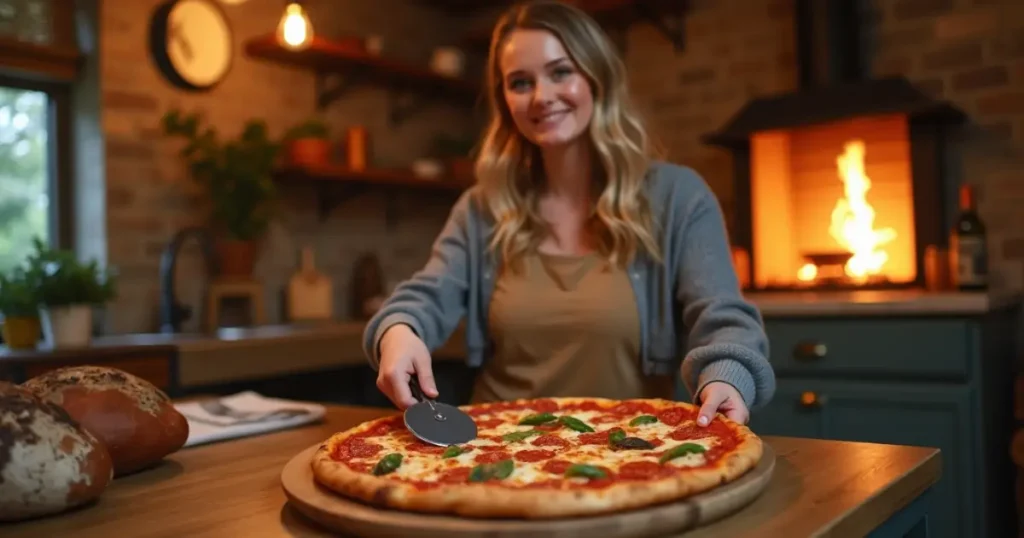
Once your crust pizza is baked to perfection, it’s time to think about how to serve it. Whether you’re preparing a cozy family dinner or entertaining guests, these serving suggestions will elevate your pizza experience and add a special touch to your meal.
1. Serve with Fresh Sides
A delicious pizza deserves to be paired with fresh, complementary sides to balance the rich, savory flavors of the cheesy crust pizza and the hearty toppings.
- Classic Caesar Salad: Crisp romaine lettuce, Parmesan, and crunchy croutons drizzled with creamy dressing perfect for balancing the richness of a stuffed crust pizza or a deep dish crust.
- Garlic Bread or Breadsticks: If you’re a fan of extra carbs, serve your pizza with warm garlic bread or soft breadsticks. They’re especially great with a thin crust pizza or if you prefer a crispy pizza dough.
- Roasted Vegetables: A medley of roasted veggies like zucchini, eggplant, and mushrooms complements the pizza and adds a healthy touch to the meal.
2. Garnish for Extra Flair
Adding a little extra garnish can elevate your homemade pizza crust and make it Instagram-worthy. A sprinkle of fresh herbs, a drizzle of olive oil, or a touch of Parmesan can make a big difference in the final presentation.
- Fresh Basil Leaves: A handful of fresh basil can be placed on top of your pizza just before serving to add a pop of color and freshness. This is especially great for Italian-style crust pizza or a classic Margherita pizza.
- Balsamic Glaze: For a sweet and tangy twist, drizzle some balsamic glaze over the top. It pairs wonderfully with cheesy crust pizza or pizzas with a lot of veggies.
3. Perfect Drinks to Pair
When it comes to drinks, pairing the right beverage with your pizza can enhance the overall dining experience.
- Wine Pairing: For a classic combo, pair your pizza with a Chianti or a light Pinot Noir. These wines complement the tangy tomato sauce and rich cheese. If you prefer white, a Chardonnay or Sauvignon Blanc works well with thin crust pizza or vegetable-topped pizzas.
- Craft Beer: A pale ale or lager complements a crispy pizza dough and the savory flavors of the pizza. The carbonation helps cut through the richness of the cheese.
- Non-Alcoholic: For a refreshing choice, pair your pizza with iced tea, lemonade, or sparkling water. The citrusy acidity balances the flavors without overpowering the pizza.
4. Pizza Cut and Serve
How you cut your pizza can make a big difference in presentation and ease of serving. Here are a few tips:
- Traditional Triangular Slices: For that classic pizza experience, cut your pizza into wedges using a sharp pizza cutter or knife. This works best for deep dish crust or a cheesy crust pizza.
- Square or “Party Style”: If you’re serving a large crowd or prefer smaller bites, cut your pizza into squares or rectangles. This method is especially great for a thin crust pizza or stuffed crust pizza.
- Serve on a Pizza Board: For a rustic presentation, use a wooden pizza board. It adds charm and keeps your pizza warm as you serve.
5. Add Some Extra Sauces
If you like a little dipping action, serve your pizza with extra sauces for dipping. You can create a fun experience for your guests and enhance the flavors of your pizza.
- Marinara Sauce: A classic choice for dipping, perfect for all types of pizza.
- Ranch Dressing: A creamy, tangy dip that’s especially popular with kids or if you’re serving a crispy pizza dough.
- Garlic Butter Sauce: For a rich and buttery flavor, garlic butter is a perfect pairing, especially for stuffed crust pizza.
6. Dessert to Finish the Meal
Why not finish your meal with a sweet treat? Here are a few dessert ideas that pair perfectly with your crust pizza.
- Chocolate Lava Cake: The richness of the chocolate complements the savory flavors of the pizza.
- Fruit Sorbet: A light, refreshing dessert to cleanse the palate after your meal.
- Tiramisu: If you want to go all out, serve an Italian-style tiramisu for a sweet and creamy ending to your pizza night.
There you have it. These serving suggestions are designed to complement your crust pizza and help you create a memorable meal for any occasion. Whether you’re entertaining guests or enjoying a casual pizza night, the right sides, garnishes, and drinks can turn your pizza into a five-star experience.
Conclusion: Why Crust Pizza is the Ultimate Comfort Food
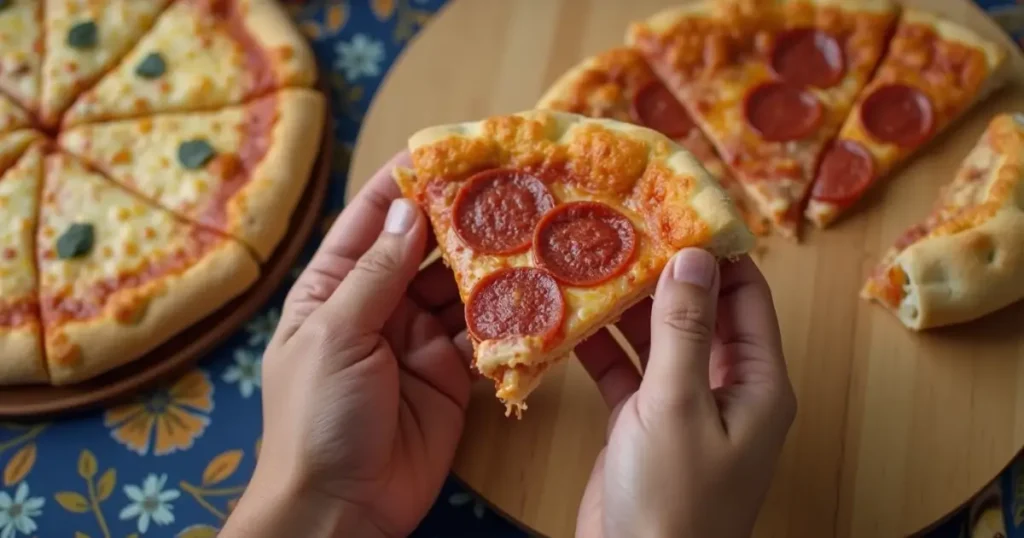
There’s something magical about a crust pizza that brings people together. Whether it’s the crispness of a thin crust pizza, the indulgence of a stuffed crust pizza, or the heartiness of a deep dish crust, this classic dish is versatile, comforting, and perfect for any occasion. As Chef Luna always says, the key to making the best pizza is using high-quality ingredients, from the perfect pizza dough to fresh, flavorful toppings. With a few simple tips and tricks, you can elevate your pizza game and impress your family and friends with each bite.
Why You’ll Love Crust Pizza:
- Customizable: Whether you’re in the mood for a simple cheese pizza or something more extravagant like a cheesy crust pizza with all your favorite toppings, the possibilities are endless.
- Perfect for Any Occasion: Pizza is always a crowd-pleaser, making it ideal for everything from casual family dinners to game nights or celebratory gatherings.
- Easy to Make: While it may seem like a culinary challenge, making a homemade pizza crust from scratch is simpler than you might think. With the right ingredients and some practice, you’ll be able to create pizza that rivals any pizzeria.
Chef Luna’s Final Tip:
The secret to the perfect pizza lies not only in the toppings but in the crust. Play around with different types like flaky crust recipe or soft and chewy crust until you find your favorite. The dough is the foundation, so make sure it’s perfectly mixed, proofed, and baked to golden perfection. You’ll notice a significant difference in the flavor and texture.
Whether you’re a pizza aficionado or a newbie to the pizza-making world, there’s no wrong way to enjoy your crust pizza. It’s all about getting creative, experimenting with toppings, and savoring the delicious results. So, roll up your sleeves and get ready to make pizza night your new favorite tradition.
You can view a collection of useful information related to the topic of our important recipes (Weight Loss)
Enjoy your crust pizza creation and remember, Chef Luna is always here to guide you through every step of your culinary journey.
Frequently Asked Questions (FAQs) About Crust Pizza
Creating the perfect crust pizza at home can raise a lot of questions, but don’t worry Chef Luna has got you covered. Here are some of the most common questions readers have when making crust pizza, along with helpful tips to ensure your pizza turns out perfect every time.
1. How do I make the perfect pizza dough?
Making a great pizza dough starts with the right ingredients and technique. The key is to use bread flour for a chewy, elastic dough, and let it rise properly to develop flavor.
- Tip: If you prefer a crispy pizza dough, roll the dough thinner. For a soft and chewy crust, keep it a bit thicker and give it a longer rise time.
- Tip: Don’t rush the process! The more time you give the dough to rise, the better the flavor will be.
2. Can I make a gluten-free crust pizza?
Absolutely! You can make a delicious gluten-free homemade pizza crust by using gluten-free flour blends. Many stores offer pre-made gluten-free pizza dough, but you can also find easy recipes online.
- Tip: Gluten-free dough can be more fragile than traditional dough, so make sure to roll it out carefully and use parchment paper to prevent sticking.
- Tip: Add a little extra cheese or toppings to help support the dough and give it flavor.
3. What toppings are best for stuffed crust pizza?
Stuffed crust pizza is a crowd favorite because it has cheese-filled crusts, which add a whole new layer of flavor. Here are some perfect topping combinations:
- Cheese: Mozzarella is always a go-to for a melty, gooey center, but feel free to add Parmesan or cheddar for extra flavor.
- Meats: Pepperoni, sausage, or bacon all work great with stuffed crust. If you prefer a veggie version, try adding mushrooms, spinach, or bell peppers.
- Sauces: Experiment with different sauces like tomato sauce, barbecue sauce, or even a white garlic sauce for a twist.
4. How do I get a crispy crust?
To achieve that perfect crispy pizza dough, there are a few things to keep in mind:
- Tip: Preheat your oven to its highest setting (usually around 475°F/245°C) and use a pizza stone or cast-iron skillet for an even, crispy finish.
- Tip: Avoid overloading your pizza with too many toppings, as this can make the crust soggy.
5. Can I freeze pizza dough for later?
Yes! You can make extra pizza dough and freeze it for future pizza nights. Simply follow the recipe and let the dough rise. Once it’s risen, punch it down and wrap it tightly in plastic wrap. Freeze for up to 3 months.
- Tip: When you’re ready to use it, allow the dough to thaw in the fridge overnight before using it for your next pizza night.
6. What’s the difference between a thin crust pizza and a deep dish crust?
The main difference between thin crust pizza and deep dish crust is the thickness of the dough and the way it’s baked.
- Thin crust pizza is crispier and lighter with less dough.
- Deep dish crust is thicker and more like a pizza casserole, with more cheese and sauce packed inside the dough.
7. Can I add extra cheese to the crust?
Yes, you can definitely add extra cheese to your crust pizza especially in the crust! For a cheesy crust pizza, stuff the crust with mozzarella or cheddar cheese before baking for a delicious surprise in every bite.
- Tip: For a gourmet twist, add some garlic or herbs into the cheesy crust for an added burst of flavor.
8. What Is the Secret to a Good Pizza Crust?
- Quality Ingredients:
Using high-protein flour such as Italian “00” flour or good bread flour helps develop strong gluten, which is crucial for structure and chewiness. The water-to-flour ratio (hydration) is important too; many great recipes hover around 60–65% hydration. - Proper Fermentation:
Allowing the dough to rest and ferment for an extended period (often through a slow, cold fermentation of 24 to 72 hours) develops flavor and improves texture. This slow rise lets enzymes break down the starches, giving the crust a nuanced taste and an airy, chewy texture. - Technique and Temperature:
Good kneading builds gluten, while proper resting periods let the dough relax. When baking, using a very hot oven (often with a pizza stone or steel) mimics the conditions of a traditional wood-fired oven, helping the crust achieve a great char and crispness.
9. What Can I Add to Pizza Crust to Make It Better?
- Olive Oil:
A drizzle of olive oil in the dough can enrich flavor and tenderness. - Herbs and Spices:
Mix in dried herbs like oregano, basil, or rosemary, or even garlic or onion powder to impart extra aroma and taste directly into the dough. - Sugar or Malt:
A small pinch of sugar or diastatic malt can boost the yeast’s performance and promote browning, giving the crust a slightly sweet depth and better color. - Beer or Sourdough Starter:
Some recipes incorporate beer or use a sourdough starter instead of commercial yeast, which can add unique flavors and a pleasant tang.
10. How Do I Make My Pizza Crust More Flavorful?
- Extended Fermentation:
As mentioned, longer fermentation (especially using a cold rise) deepens flavor by allowing complex compounds to develop over time. - Ingredient Adjustments:
Experiment with incorporating flavor-enhancing ingredients such as a splash of olive oil, herbs, or even a touch of garlic into the dough itself. - Use of a Starter:
A sourdough starter can add an extra layer of tang and complexity to your crust. - Hydration and Baking Method:
Slightly higher hydration can result in a lighter, airier texture, and baking on a preheated stone or steel in a super-hot oven not only gives you a good crisp but can also intensify flavors through proper caramelization.
11. Should I Prebake Pizza Crust Before Adding Toppings?
- Traditional Method vs. Prebaking:
For many classic pizza recipes, toppings are added directly to the raw dough and baked together. This method allows the flavors to meld and keeps the crust soft where it meets the toppings. - When to Consider Prebaking (Par-Baking):
- Moist Toppings: If you’re using toppings with high moisture content (like fresh tomatoes or watery vegetables), a brief prebake (about 3–5 minutes) can help set the crust, preventing it from becoming soggy.
- Thicker Crusts: For deeper-dish or thicker crust styles, prebaking can provide a sturdier base that holds up well under heavier toppings.
Balance Is Key:
Keep in mind that while prebaking can ensure a crisper base, it may slightly change the overall texture of the crust. Experimenting with both methods based on the style of pizza and toppings you’re using will help you determine what works best for your taste.
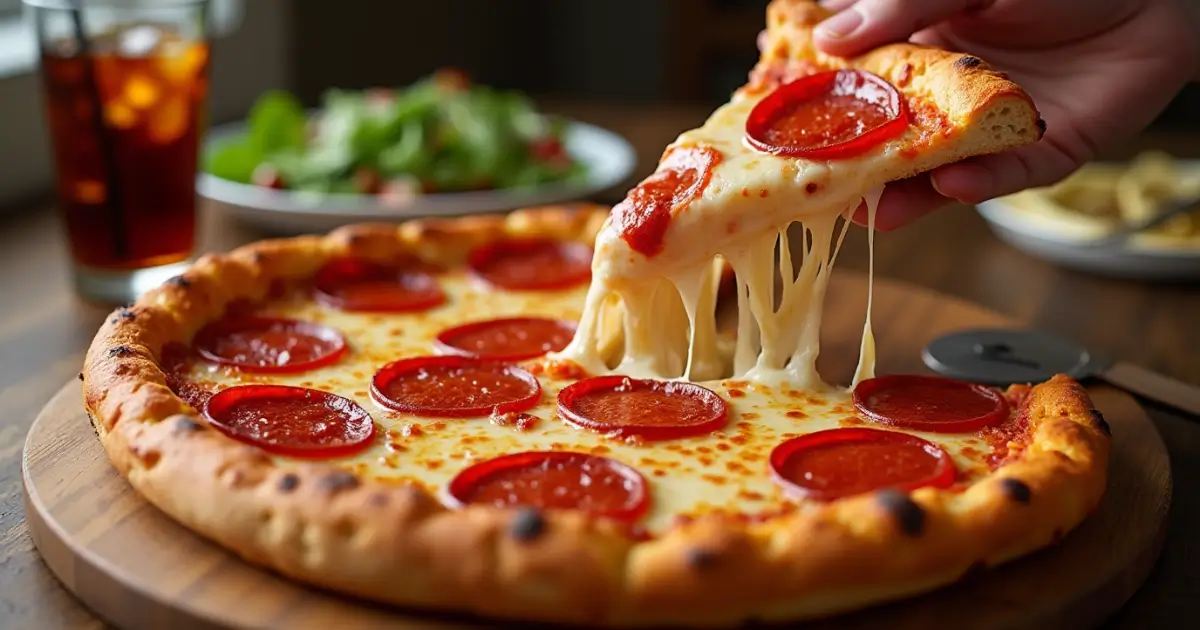
Crust Pizza
Equipment
- Mixing Bowl
- Rolling Pin
- Oven
Ingredients
Classic Thin Crust
- 2 cups all-purpose flour
- 1 tsp salt
- 3/4 cup warm water
- 1 1/2 tsp instant yeast
- 1 tbsp olive oil
Thick Crust
- 2 1/2 cups bread flour
- 1 tsp sugar
- 1 tbsp olive oil
- 1 tsp salt
- 1 cup warm water
- 2 tsp active dry yeast
Stuffed Crust
- 1 batch thick crust dough
- 1 cup mozzarella cheese shredded
Whole Wheat Crust
- 2 cups whole wheat flour
- 1 tsp salt
- 1 tbsp olive oil
- 3/4 cup warm water
Instructions
- For thin crust, mix all ingredients and knead until smooth. Let rest for 30 minutes.
- For thick crust, knead until elastic and let rise for 1 hour.
- For stuffed crust, roll out dough and place cheese around the edge, folding over.
- For whole wheat crust, mix ingredients, knead, and let rest for 1 hour.
- Preheat oven to 475°F (245°C) and bake your pizza crust of choice for 12-15 minutes.
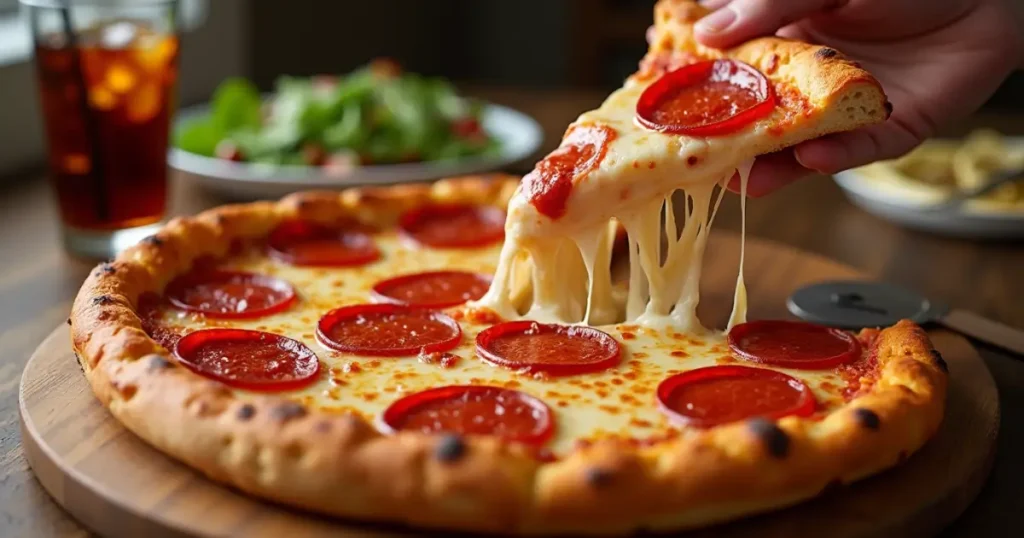
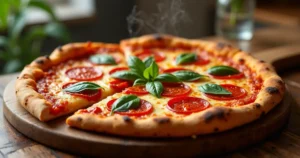
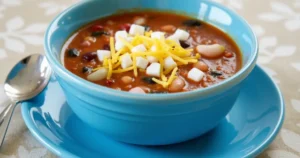


Yummy Recipe
It’s a really great recipe, I recommend you try it: https://chilisrecipes.com/easy-brazilian-mounjaro-3-ingredientssimple/
Yummy Taste Yummy : https://chilisrecipes.com/easy-brazilian-mounjaro-3-ingredientssimple/
Really great recipe, I recommend it
Yes very yummy